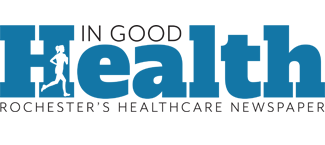Radiologist from Borg and Ide Imaging in Rochester says her practice is increasingly relying on AI for breast imaging. ‘It’s game-changing,’ she says
By Chris Motola
Q: You are a radiologist, and I understand you’ve been using AI more often in your work.
A: Yeah, so I’m kind of the president of the group, like the professional group and we work in conjunction with a company called RadNet, who’s also affiliated with a company called Deep Health. And Deep Health is an AI company. So we have access to a lot of the newest AI. We use it, most notably in breast imaging.
Q: You mentioned prior to the interview that radiology accounts for most of the FDA-approved usage of AI in medicine. But has it been widely adopted in the area?
A: We’re actually the only facility in Rochester that uses true AI technology to evaluate mammograms. We have a program where we put the mammograms through this program. It’s called EBCD, which is enhanced breast cancer detection. It’s kind of like having another pair of eyes on each mammogram and it circles areas of concern and rates them in terms of the probability of cancer based on its analysis. It’s pretty cool. And it’s being developed in other areas of cancer as well.
Q: How helpful is it in your own processes? Have you found it to be game-changing? Slightly helpful? Occasionally helpful?
A: I think it’s game-changing. Before that, we had something called CAD, which is computer-assisted diagnosis and it basically circled so many things that you tended to ignore it. This only will highlight up to four different findings on a mammogram. So if it doesn’t highlight anything, I’m pretty confident. I mean, I think the percentage is less than 5% of those cases will be cancer. So if it’s a green, which is the least suspicious, then I’m pretty confident that if I see something, it’s probably nothing and I likely won’t call back the patient. My confidence has gone up as I’ve used it more. And then there are the ones that are marked red, which is kind of the highest suspicion, unless sometimes it’s because it’s post-surgical or something that’s been stable. Then I might dismiss it. But I found several times, more than several times, I would say, where it really highlighted something that I might have not called back on my own, and it turned out to be malignant or cancer. So, yeah, I think it’s game-changing and I think it’s only going to improve with time.
Q: Do you think there’s a chance of it replacing human diagnostics? Or is it something you’d see as more of a supplement?
A: Well, right now it’s a supplement, but my guess is within probably the next five years, all those green [findings] will not be read by radiologists. They’ll just go through the computer and will be dismissed as negative and that’s it. So, I do think at least the bottom quarter or bottom eighth of the population that has a totally normal mammogram probably will not be read by radiologists. And right now there’s a huge radiology shortage and there’s no sense that that’s going to improve, so with the radiologist shortage I feel that it’s actually a good thing. And not only that, it allows perhaps people in communities that are less served to have access when right now they don’t have access because of the you know availability of radiologists. So I think it’s a win-win if this frees up more of your time.
Q: How would you apportion the spare time you get back from having AI do more of the screening?
A: I mean it just probably would eliminate, I would say, eventually about a quarter of mammograms. The radiologists can spend more time with procedures and with the more difficult diagnostic cases of palpable masses, breast pain, all kind of things that are more targeted that would go to the radiologist. But I would think about it, I would guess, probably 25% of mammograms eventually won’t be read by radiologists, but it’s only a guess.
Q: Why do you think radiology is the leading use case for AI?
A: So, yeah, it’s interesting. If you look it up, 75% or so of approved AI technology in healthcare is in radiology. I think it’s just uniquely suited for AI because of how repetitive screenings are. We also have the data for it to train on. We have the images that can be analyzed by the computers. So it’s kind of uniquely suited for AI. And we also do a lot of screening. Radiology is important in screening of lung cancer where there is AI that’s evolving. And also with prostate cancer, we have AI that’s evolving as well. I think there was something I read years ago where one person said that AI would replace radiologists and I don’t think that’ll be the case. I think it will help radiologists and free them up to do other things.
Q: Given your role as secretary at the Monroe County Medical Society, have you been able to share what you’re seeing with other specialties and advise them on how to prepare for this technology?
A: Yeah, I recently wrote an article for the Monroe County Medical Society about AI and radiology and how we use it for our enhanced breast cancer detection at Borg and Ide and so I did write that article. On a day-to-day level, Monroe County Medical Society is more to educate, which we’re doing. I was scheduled, although it got postponed until the fall, to do a lecture on AI and how it will perhaps or maybe make our lives less stressful as physicians. I still have the lecture prepared. The next AI use case that I see coming is for reports. So like I’m talking to you now, I’ll be able to talk like this when I’m looking at a chest X-ray, let’s say, and I say, “Oh, I see the heart looks normal. And, uh, there’s a pneumonia in the left lung,” and it’ll put together a report without me actually dictating the report word for word. So that kind of thing saves us time and I hope, will, you know, will lead to less burnout.
Q: What should patients be aware of regarding radiology?
A: I think everyone should know about different screening exams that are offered in terms of prostate cancer, MRI’s role in prostate cancer and targeting for biopsies. Any man who has a rising PSA should probably get an MRI before they get a biopsy. So that’s important for them to know. And it is approved. Patients also who have elevated risk factors of coronary artery disease should get a coronary score so if you have some elevated lipids and you have a lot of calcium on the coronary arteries, then your physician may want to treat you with, you know, a statin compel you to do more lifestyle changes. I think knowledge is power.
LIFELINES
Name: Jane S. Bennett, MD, FACR
Position: President and CEO of The Borg and Ide Imaging Group, P.C.; consultant, Maximus Federal Services in Pittsford
Hometown: New York, New York
Education: SUNY Upstate Medical University, medical degree; Long Island Jewish Medical Center, medical internship; Albert Einstein College of Medicine And Montefiore Medical Center, radiology residency; Memorial Sloan Kettering Hospital, fellow in neuroradiology; Cornell University College of Medicine, fellow in neuroradiology
Affiliations: Unity Hospital
Organizations: American College of Radiology; Monroe County Medical Society; American College of Radiology
Family: Husband, three children, two grandchildren
Hobbies: Yoga, reading

